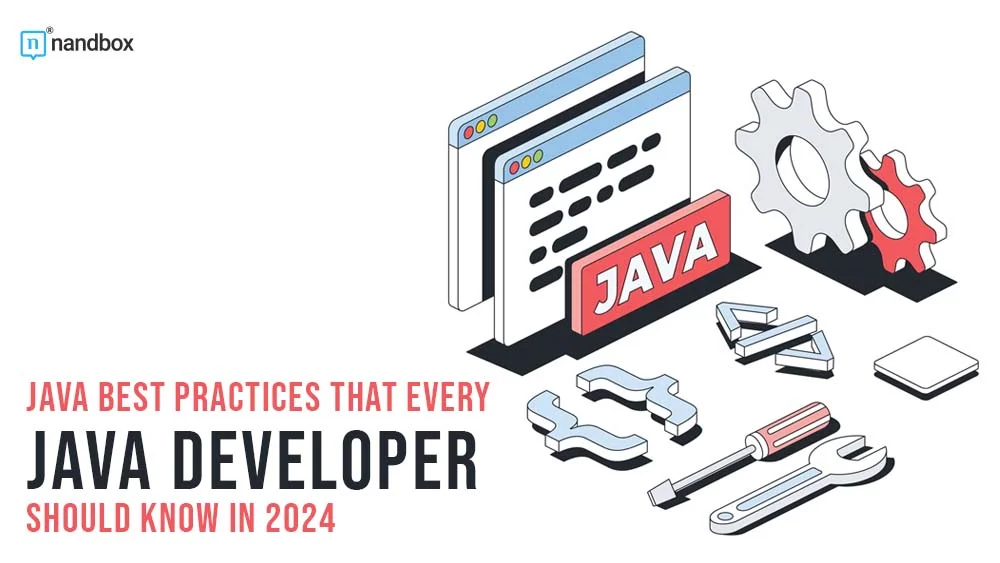Introduction
Given Java’s prominence in the technology stacks of most software development companies, it’s crucial that developers write code in accordance with the language’s established standards and best practices. The language is a great option for app development due to its comprehensive set of capabilities. One’s responsibilities grow proportionally with one’s level of authority. Large-scale Java application development initiatives provide unique challenges. Any Java development services company may easily create high-performance, complex code by adhering to industry standards for Java code. The guidelines for the Java best practices in software development are discussed in the following post.
Java Best Practices
Use Proper Naming Conventions
The trick to producing fast code when using different Java frameworks, is to make sure that not only performs well but is also legible. Moreover, a program’s readability determines how quickly you and your colleagues can grasp its intent.
And using uniform naming conventions has emerged as one of the most reliable methods to make code easier to understand. Also, naming conventions are a set of rules that ensure every identifier (classes, elements, layouts, methods, etc.) adhere to the same name standard.
Given the intended audience, we have included some common Java naming conventions below:
- Only nouns should be used for naming classes, and the first letter of the name should always be capitalized.
- All lowercase letters must be used in package names.
- As a general rule, programmers should avoid using acronyms.
- Camel case should be used when naming interfaces.
- All of your method names must be verbs. Additionally, except for the first word, programmers should capitalize the first letter of each word in a method’s name.
- The mixed case convention (Camel Case, with the initial letter not capitalized) is to be used for variable names.
- The names should be accurate and appropriate for the software.
Class Members Should be Private
Keeping class fields as unavailable as feasible is recommended among Java best practices. It’s done to keep the fields safe. A private access modifier is the best option for this purpose. The OOP idea of encapsulation relies on this method of operation being followed. Despite being a fundamental principle of OOP, Also, many inexperienced programmers fail to correctly allocate access modifiers to classes, opting instead to make everything public.
Take into account this public class with accessible fields:
public class Teacher {
public String name;
public String subject;
}
This breaks the encapsulation since these values are easily modifiable by any user.
Teacher T01 = new Teacher();
Teacher.name = “Sam”;
Teacher.subject = “Science”;
When used on class members, the private access modifier hides the fields so that no one except the class’s setter functions may modify the data.
Another illustration of the private access modifier in use:
public class Teacher {
private String name;
private String subject;
public void setName(String name) {
this.name = name;
}
public void setSubject(String subject)
this.subject = subject;
}
}
Use Underscores in lengthy Numeric Literals
Thanks to the changes introduced in Java 7, you are able to compose long numeric literals that have a high readability ranking.
Before using Underscore:
int minUploadSize = 05437326;
long debitBalance = 5000000000000000L;
float pi = 3.141592653589F;
After making use of Underscore:
int minUploadSize = 05_437_326;
long debitBalance = 5_000_000_000_000_000L;
float pi = 3.141_592_653_589F;
The preceding Java declarations illustrate the usefulness of utilizing underscores in numeric literals. Furthermore, you can tell which statement is easier to understand by looking at the two examples above: the one with the underscores is on the right.
Avoid Redundant Initialization
When and how variables are initialized is a frequent coding approach in Java that distinguishes novices from experts.
Recently graduated programmers in the field of computer science are increasingly accustomed to the practice of setting all program variables to null. While this is generally a good idea, it can lead to unnecessary repetition if the initial value of a variable is never used again.
Take a look at the following code snippet as an example:
import java.util.Scanner;
class Main {
public static void main(String[] args) {
Scanner temp = new Scanner(System.in);
int c=0;
System.out.println(“Enter temperature in degree Celsius:”);
c = temp.nextInt();
int fah= ((c*9)/5)+32;
System.out.println(“Temperature in degree Fahrenheit is: ” + fah);
}
}
The initial value of the “c” variable in the preceding code is zero. When a new number is entered, meanwhile, the old one is deleted. As an outcome, the program initializes variable c twice, even though it only ever uses the “zero” value.
Duplicate initializations are discouraged since they provide nothing but wasted space. Therefore, only default initialization values if you’re going to be using their initial values elsewhere in the code.
Avoid empty catch Blocks
The program continues to run silently when an error is detected by an empty catch block, making debugging more difficult. Take the subsequent command-line program for adding two integers as an example:
public class Sum {
public static void main(String[] args) {
int a = 0;
int b = 0;
try {
a = Integer.parseInt(args[0]);
b = Integer.parseInt(args[1]);
} catch (NumberFormatException ex) {
}
int sum = a + b;
System.out.println(“Sum = ” + sum);
}
}
Point out that there is no code in the catch block. Also, the preceding is the command line that will be used to launch the application:
java Sum 123 456y |
Gradually, it will fail to do so:
| Sum = 123 |
The reason for this is that the NumberFormatException is produced due to the second parameter 456y, but the catch block does not contain any code to deal with this.
Therefore, you should avoid using catch blocks that aren’t being used. The following actions are recommended whenever an exception is caught:
- Explain the error to the user, maybe by displaying a message or prompting them to retry their previous actions.
- Use JDK Logging or Log4J to record the error.
- Cover it up with a new exception and throw it again.
The code to handle exceptions may look different depending on the specifics of the program. One should never let an empty catch block “eat” an exception.
Here’s an enhanced version of the above code:
public class Sum {
public static void main(String[] args) {
int a = 0;
int b = 0;
try {
a = Integer.parseInt(args[0]);
b = Integer.parseInt(args[1]);
} catch (NumberFormatException ex) {
System.out.println(“One of the arguments are not number.” +
“Program exits.”);
return;
}
int sum = a + b;
System.out.println(“Sum = ” + sum);
}
Use StringBuilder or StringBuffer for String Concatenation
It is the standard custom in many programming languages, such as Java, to link Strings together using the “+” operator.
This is a perfectly valid technique, however using the “+” operator to concatenate several strings wastes time since the Java compiler must first generate several intermediate string objects before constructing the final concatenated string.
For this scenario, “StringBuilder” or “StringBuffer” would be Java’s recommended solutions. These built-in functions allow for the modification of a String without the need for any intermediary String instances, hence reducing both processing time and unnecessary memory usage.
For example,
String sql = “Insert Into Users (name, age)”;
sql += ” values (‘” + user.getName();
sql += “‘, ‘” + user.getage();
sql += “‘)”;
You may use StringBuilder to create the aforementioned code;
StringBuilder sqlSb = new StringBuilder(“Insert Into Users (name, age)”);
sqlSb.append(” values (‘”).append(user.getName());
sqlSb.append(“‘, ‘”).append(user.getage());
sqlSb.append(“‘)”);
String sqlSb = sqlSb.toString();
Proper handling of Null Pointer Exceptions
Let’s talk about the NPE, or Null Pointer Exception, which occurs frequently in Java.
When an application attempts to utilize a reference to an object that does not exist, it generates a Null Pointer Exception. This might happen:
- If the field of a null object was modified or accessed.
- Calling a method on a nonexistent object.
- Making changes to a null object or attempting to use its slots.
- Casting null to the Throwable type.
- Synchronizing over a null object.
As a Java developer, you will always see Null pointer exceptions; effectively handling them requires only a few fundamental best practices. To achieve the reliability and efficiency this Java performance monitoring tool offers, developers can focus on methodologies like JMX metrics, which help them understand resource utilization and system behavior in production.
First and foremost, before running the code, make sure that any variables or values that may be Null have been checked. You should also update your code to handle exceptions properly.
Take a look at this sample of code:
int noOfworkers = company.listWorkers().count;
Neither “Company” nor the “listWorkers()” function can be Null, but if they are, the code will nonetheless throw an NPE.
This may be a more refined version:
private int getListOfWorkers(File[] files) {
if (files == null)
throw new NullPointerException(“File list cannot be null”);
Conclusion
A wide variety of applications can be created using Java. To deal with this flexibility, or more accurately, to exploit it, developers need to acquire the ability to not only code but to code intelligently. The aforementioned Java best practices are by no means all-inclusive, but they do provide a solid foundation upon which to build for any aspiring Java programmer. Read through these suggestions, seek out more on the web as well, and improve your programming abilities. All the best!






